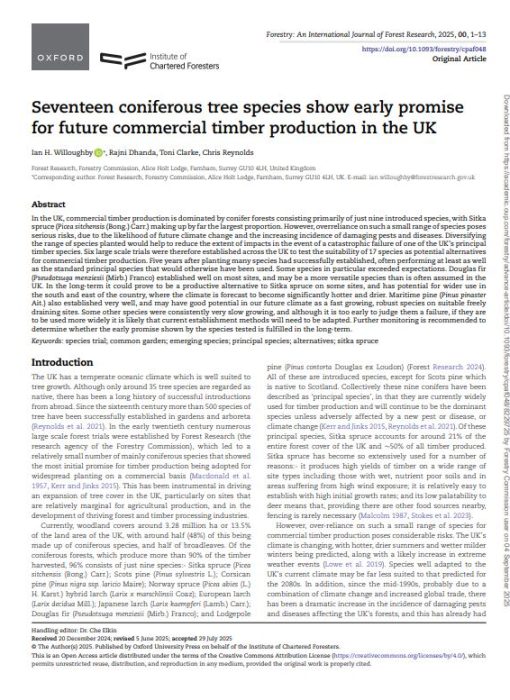Summary
In the UK, commercial timber production is dominated by conifer forests consisting primarily of just nine introduced species, with Sitka spruce (Picea sitchensis (Bong.) Carr.) making up the largest proportion.
However, overreliance on such a small range of species poses serious risks, due to the likelihood of future climate change and the increasing incidence of damaging pests and diseases. Diversifying the range of species planted would help to reduce the extent of impacts in the event of a catastrophic failure of one of the UK’s principal timber species.
Six large scale trials were therefore established across the UK to test the suitability of 17 species as potential alternatives for commercial timber production. Five years after planting many species had successfully established, often performing at least as well as the standard principal species that would otherwise have been used.
Some species in particular exceeded expectations. Douglas fir (Pseudotsuga menziesii (Mirb.) Franco) established well on most sites, and may be a more versatile species than is often assumed in the UK. In the long-term it could prove to be a productive alternative to Sitka spruce on some sites, and has potential for wider use in the south and east of the country, where the climate is forecast to become significantly hotter and drier.
Maritime pine (Pinus pinaster Ait.) also established very well, and may have good potential in our future climate as a fast growing, robust species on suitable freely draining sites. Some other species were consistently very slow growing, and although it is too early to judge them a failure, if they are to be used more widely it is likely that current establishment methods will need to be adapted.
Further monitoring is recommended to determine whether the early promise shown by the species tested is fulfilled in the long-term.

